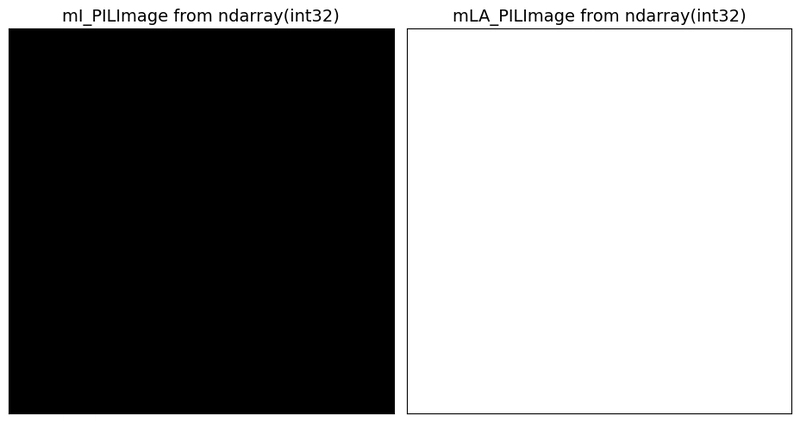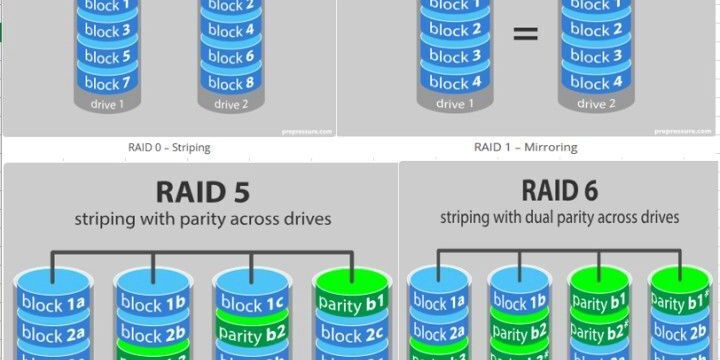Exploring Blockchain Variants: Public, Private, Consortium, and Hybrid – A Comprehensive Overview
Abstract: This post dives deep into the world of blockchain technology by exploring the four primary blockchain variants – public, private, consortium, and hybrid. We outline their characteristics, historical context, technical features, applications across industries, and challenges. Along with descriptive tables and bullet points, we integrate relevant hyperlinks to authoritative resources such as Bitcoin, Ethereum, Hyperledger, and many more. This technical yet accessible overview is designed to aid both developers and business decision-makers in navigating the evolving blockchain ecosystem. Introduction Blockchain technology has reshaped industries and is steadily altering the landscape of digital transactions. Often touted for its security, transparency, and decentralization, blockchain is not one-size-fits-all. There are several blockchain variants—namely, public, private, consortium, and hybrid—each designed to meet specific needs. In this post, we will explore these variants in detail, providing technical insights and practical perspectives that help you understand which model best suits various applications from finance to supply chain management and healthcare. Understanding these different models is essential as blockchain adoption accelerates globally. With ever-evolving digital infrastructures and new use cases emerging, a deep dive into the core concepts of blockchain technology becomes invaluable. We will also look at the challenges, limitations, and potential future trends shaping the blockchain space. Background and Context Blockchain technology was initially conceived with the advent of Bitcoin in 2008. Over time, the ecosystem has evolved to embrace various models. Below is a brief historical perspective along with key definitions: Blockchain: A distributed ledger technology that records transactions across many computers. Public Blockchain: Fully decentralized networks where anyone can join and validate transactions. Private Blockchain: A permissioned network where access is restricted to selected participants. Consortium Blockchain: A semi-decentralized model governed by a group of organizations. Hybrid Blockchain: Combines elements of both public and private systems to provide controlled access yet maintains essential transparency. Historical Milestones: 2008: The Bitcoin whitepaper by Satoshi Nakamoto introduced the idea of a decentralized digital currency. 2015: Ethereum revolutionized blockchain with smart contracts, leading to broader innovation. Recent years: Consortium and hybrid blockchains have emerged, particularly in sectors like banking, healthcare, and supply chain, fulfilling industry-specific demands. The original article on types of blockchains offers a concise guide that serves as the foundation for our deeper exploration. Core Concepts and Features Each blockchain variant comes with its distinct features, benefits, and limitations. Understanding these aspects will help you decide which blockchain variant aligns with your project or organization’s needs. 1. Public Blockchains Overview: Public blockchains such as Bitcoin and Ethereum are decentralized and open to anyone. They are built on transparent algorithms and consensus mechanisms—such as Proof of Work (PoW) and Proof of Stake (PoS)—that maintain network integrity. Key Features: Decentralization: No central authority controls the network. Transparency: Transactions are visible to all participants. Security: Robust consensus mechanisms secure the network against attacks. Immutability: Once data is recorded, it cannot be altered. Benefits: Trust is built through transparency. Open participation allows for widespread innovation. Enhanced security with cryptographic techniques. Challenges: Scalability: Increased users can slow transaction speeds. High Energy Consumption: Especially in PoW implementations. Latency Issues: Time taken for consensus can affect real-time applications. 2. Private Blockchains Overview: Private blockchains, including examples like Hyperledger and Ripple, offer a permissioned model. They are designed for enterprises that require control over data and enhanced privacy. Key Features: Permissioned Access: Only approved users can join the network. Speed and Efficiency: Fewer nodes result in faster transactions. Data Privacy: Sensitive information is protected from public view. Customizability: Networks can be tailored to the organization’s needs. Benefits: Efficiency: Significantly lower transaction times. Cost-Effective: Low energy consumption relative to public blockchains. Controlled Environment: Suitable for regulatory compliance. Challenges: Centralized Control: May compromise trust if too centralized. Limited Transparency: Data access is limited to approved parties. Security Risks: Fewer nodes can sometimes lead to vulnerabilities. 3. Consortium Blockchains O

Abstract:
This post dives deep into the world of blockchain technology by exploring the four primary blockchain variants – public, private, consortium, and hybrid. We outline their characteristics, historical context, technical features, applications across industries, and challenges. Along with descriptive tables and bullet points, we integrate relevant hyperlinks to authoritative resources such as Bitcoin, Ethereum, Hyperledger, and many more. This technical yet accessible overview is designed to aid both developers and business decision-makers in navigating the evolving blockchain ecosystem.
Introduction
Blockchain technology has reshaped industries and is steadily altering the landscape of digital transactions. Often touted for its security, transparency, and decentralization, blockchain is not one-size-fits-all. There are several blockchain variants—namely, public, private, consortium, and hybrid—each designed to meet specific needs. In this post, we will explore these variants in detail, providing technical insights and practical perspectives that help you understand which model best suits various applications from finance to supply chain management and healthcare.
Understanding these different models is essential as blockchain adoption accelerates globally. With ever-evolving digital infrastructures and new use cases emerging, a deep dive into the core concepts of blockchain technology becomes invaluable. We will also look at the challenges, limitations, and potential future trends shaping the blockchain space.
Background and Context
Blockchain technology was initially conceived with the advent of Bitcoin in 2008. Over time, the ecosystem has evolved to embrace various models. Below is a brief historical perspective along with key definitions:
- Blockchain: A distributed ledger technology that records transactions across many computers.
- Public Blockchain: Fully decentralized networks where anyone can join and validate transactions.
- Private Blockchain: A permissioned network where access is restricted to selected participants.
- Consortium Blockchain: A semi-decentralized model governed by a group of organizations.
- Hybrid Blockchain: Combines elements of both public and private systems to provide controlled access yet maintains essential transparency.
Historical Milestones:
- 2008: The Bitcoin whitepaper by Satoshi Nakamoto introduced the idea of a decentralized digital currency.
- 2015: Ethereum revolutionized blockchain with smart contracts, leading to broader innovation.
- Recent years: Consortium and hybrid blockchains have emerged, particularly in sectors like banking, healthcare, and supply chain, fulfilling industry-specific demands.
The original article on types of blockchains offers a concise guide that serves as the foundation for our deeper exploration.
Core Concepts and Features
Each blockchain variant comes with its distinct features, benefits, and limitations. Understanding these aspects will help you decide which blockchain variant aligns with your project or organization’s needs.
1. Public Blockchains
Overview:
Public blockchains such as Bitcoin and Ethereum are decentralized and open to anyone. They are built on transparent algorithms and consensus mechanisms—such as Proof of Work (PoW) and Proof of Stake (PoS)—that maintain network integrity.
Key Features:
- Decentralization: No central authority controls the network.
- Transparency: Transactions are visible to all participants.
- Security: Robust consensus mechanisms secure the network against attacks.
- Immutability: Once data is recorded, it cannot be altered.
Benefits:
- Trust is built through transparency.
- Open participation allows for widespread innovation.
- Enhanced security with cryptographic techniques.
Challenges:
- Scalability: Increased users can slow transaction speeds.
- High Energy Consumption: Especially in PoW implementations.
- Latency Issues: Time taken for consensus can affect real-time applications.
2. Private Blockchains
Overview:
Private blockchains, including examples like Hyperledger and Ripple, offer a permissioned model. They are designed for enterprises that require control over data and enhanced privacy.
Key Features:
- Permissioned Access: Only approved users can join the network.
- Speed and Efficiency: Fewer nodes result in faster transactions.
- Data Privacy: Sensitive information is protected from public view.
- Customizability: Networks can be tailored to the organization’s needs.
Benefits:
- Efficiency: Significantly lower transaction times.
- Cost-Effective: Low energy consumption relative to public blockchains.
- Controlled Environment: Suitable for regulatory compliance.
Challenges:
- Centralized Control: May compromise trust if too centralized.
- Limited Transparency: Data access is limited to approved parties.
- Security Risks: Fewer nodes can sometimes lead to vulnerabilities.
3. Consortium Blockchains
Overview:
Consortium blockchains—exemplified by technologies like R3 Corda and Energy Web Chain—are managed by a group of organizations. This model is perfect for multiple stakeholders who need to collaborate over shared data while retaining individual autonomy.
Key Features:
- Shared Control: Governance is distributed among a few trusted entities.
- Collaborative Environment: Suits industries that require joint oversight.
- Enhanced Security and Compliance: Balances openness with controlled membership.
Benefits:
- Fair Governance: Decisions are made collectively.
- Efficiency in Collaboration: Useful in sectors like finance, supply chain, and healthcare.
- Cost Savings: Transaction fees and infrastructure costs are reduced through shared resources.
Challenges:
- Complex Governance Structures: Decision-making can be slow due to multiple stakeholders.
- Trust Issues: Requires a high level of mutual trust among consortium members.
- Setup Complexity: Initial configuration and consensus among parties are challenging.
4. Hybrid Blockchains
Overview:
Hybrid blockchains, with examples like Dragonchain and XinFin, aim to combine the strengths of both public and private blockchains. They allow sensitive data to remain private while still benefiting from public validation.
Key Features:
- Controlled Privacy: Allows organizations to segregate sensitive details from publicly visible information.
- Interoperability: Can switch between private and public networks as the situation demands.
- Scalability: Ability to offload non-sensitive transactions to a public network to improve scalability.
Benefits:
- Flexibility: Merges the benefits of transparency and privacy.
- Enhanced Performance: Efficient processing of large volumes of transactions.
- Versatility: Adapts to the varying needs of different industries.
Challenges:
- Implementation Complexity: Careful balancing is needed to maintain security.
- Integration Issues: Merging disparate network protocols may lead to vulnerabilities.
- Governance Dilemmas: Defining control rules can be complicated.
Comparative Table of Blockchain Variants
The following table summarizes the key attributes of each blockchain type:
| Blockchain Type | Access | Consensus Mechanism | Transparency | Scalability | Ideal Use Cases |
|---|---|---|---|---|---|
| Public | Open for all | PoW, PoS, etc. | High | Limited (varies) | Cryptocurrencies, decentralized apps |
| Private | Permissioned | Custom, often centralized | Limited | High | Enterprise solutions, sensitive data |
| Consortium | Limited to select members | Consortium models (hybrid) | Moderate | Moderate to high | Inter-organizational collaborations |
| Hybrid | Combination of public and private | Decentralized/private mix | Variable | High | Projects needing both privacy and transparency |
Applications and Use Cases
Blockchain variants are not merely theoretical—they are implemented across many industries. Let’s look at some practical examples:
Finance
Blockchain has transformed finance across various domains:
- Cryptocurrencies: Platforms like Bitcoin and Ethereum rely on public blockchains for permissionless financial transactions.
- Banking Solutions: Private blockchains, such as those built on Hyperledger, streamline internal operations, improve transaction speeds, and reduce costs.
- Collaborative Financial Networks: Consortium blockchains are ideal for interbank transactions, where multiple financial institutions collaborate securely.
For further insights, check out this detailed article on blockchain in finance.
Supply Chain
By ensuring end-to-end transparency, blockchain technology enhances the traceability of goods:
- Product Authenticity: Public and hybrid blockchains can record every transaction along the supply chain, ensuring authenticity.
- Efficient Tracking: Consortium models offering a centralized governance model are ideal for multi-stakeholder supply chains.
- Reduced Fraud: The immutable nature of blockchain protects against counterfeit products.
For more information, explore blockchain in supply chain.
Healthcare
In healthcare, data security and privacy are paramount:
- Patient Data Security: Consortium and hybrid blockchains secure patient data and facilitate safe sharing between institutions.
- Efficient Record Management: Private blockchains speed up transactions and simplify record-keeping.
- Compliance and Auditability: Immutable records assist in regulatory compliance and audit trails.
Learn how healthcare is leveraging blockchain on blockchain in healthcare.
Challenges and Limitations
Despite the potential, each blockchain variant faces certain challenges:
Scalability Issues:
Public blockchains often suffer from performance bottlenecks as the network grows. High throughput is difficult to achieve without compromising decentralization.Energy Consumption:
Especially in PoW-based systems, significant energy is needed, leading to environmental concerns.Governance Complexity:
Consortium and hybrid models might face delays and conflicts in decision-making due to multiple stakeholders' involvement.Security Concerns:
While blockchains are designed to be secure, permissioned networks with fewer nodes may be vulnerable to targeted attacks.Interoperability:
Integrating private and public components in hybrid blockchains requires careful planning and secure bridging protocols to avoid potential data leakages.
Bullet List of Key Challenges:
- Scalability bottlenecks in public blockchains.
- High energy consumption in PoW systems.
- Governance and consensus delays in consortium models.
- Security risks in under-dimensioned private networks.
- Interoperability hurdles in hybrid blockchain implementations.
Future Outlook and Innovations
As blockchain technology matures, new trends and advances will shape the future:
Improved Consensus Algorithms:
Innovations such as Proof of Stake and delegated models are reducing energy consumption and improving scalability.Interoperability Solutions:
Projects focusing on cross-chain communication will enable disparate blockchain networks to interact seamlessly. For example, ongoing developments around interoperability with Ethereum and other networks are promising.Advanced Privacy Features:
Technologies like zero-knowledge proofs and secure multi-party computations will enhance privacy while retaining the benefits of transparency in public networks.Hybrid Approaches Becoming Mainstream:
Organizations will increasingly adopt hybrid blockchain models to achieve a balance between regulatory compliance and public data verification. This will allow sensitive data to be controlled while still leveraging the trust mechanisms of public blockchains.Expansion into New Sectors:
Beyond finance, healthcare, and supply chain, innovative use cases in government services, education, and digital identity management are expected to grow.
Developers and innovators are also exploring new funding models, such as open-source sponsorships and tokenized ecosystems. For instance, exploring Arbitrum community governance and other collaborative projects is providing fresh impetus for blockchain projects.
Integration with Other Open Source and Blockchain Innovations
Blockchain does not exist in isolation. It is increasingly integrated with open-source initiatives and other innovative tech landscapes. Developers are leveraging platforms like GitHub Sponsors to support open-source projects that fuel blockchain advancements. Articles such as Exploring the Drip Network Tax Structure and Unveiling the Apache License 2.0: Freedom and Open Source Innovation discuss how open-source funding mechanisms are interwoven with blockchain development.
Moreover, collaborative projects bridging blockchain and open-source frameworks are paving the way for robust security protocols and streamlined licensing models. For an expanded view on how blockchain and open source merge, be sure to check out articles like Navigating Innovation and Regulation: How the Trump Administration Shaped Open Source Policy and Bridging Islands of Innovation: The Quest for Blockchain Interoperability.
Summary and Conclusion
In summary, the blockchain technology landscape is rich and varied. Understanding the differences between public, private, consortium, and hybrid blockchains allows organizations to choose the right solution for their specific needs. Here is a quick recap:
Public Blockchains:
Offer unmatched transparency and decentralization, ideal for cryptocurrencies and decentralized apps. However, they struggle with scalability and energy efficiency.Private Blockchains:
Provide speed, efficiency, and enhanced privacy by limiting access to approved participants, making them ideal for enterprise solutions yet sometimes at the cost of reduced trust.Consortium Blockchains:
Empower collaboration among multiple organizations, but the complexity of shared governance can slow decisions down.Hybrid Blockchains:
Strike a balance by combining the benefits of public networks’ transparency with the controlled environments of private ones, though integration can be challenging.
Key Takeaways:
- Blockchain variants address different use cases—ranging from finance to healthcare and supply chain, each with specific advantages and trade-offs.
- As technology evolves, innovations in consensus mechanisms, interoperability, and privacy will further drive adoption across industries.
- Open-source contributions and emerging funding models continue to shape the future of blockchain, ensuring sustained innovation and collaboration.
As you determine the appropriate blockchain model for your project, it’s crucial to weigh these factors while keeping an eye on the future trends. For a broader perspective on blockchain fundamentals, you may find Wikipedia’s article on Blockchain a useful resource, and for detailed insights on public versus private blockchains, refer to this guide.
In an ever-evolving digital ecosystem, blockchain technology continues to push boundaries and set new standards for transparency, security, and efficiency. Whether you are an enterprise looking to streamline internal processes or a developer passionate about decentralization, the variety of blockchain solutions available today presents a wealth of opportunities.
By embracing blockchain’s potential and understanding the nuances of each type, organizations can harness cutting-edge technology to revolutionize industries, promote innovation, and build more secure, transparent systems. Stay tuned to ongoing developments, and explore linked resources for in-depth reading to remain ahead in this dynamic field.
Happy exploring and innovating in the world of blockchain!










































































































































































![[The AI Show Episode 146]: Rise of “AI-First” Companies, AI Job Disruption, GPT-4o Update Gets Rolled Back, How Big Consulting Firms Use AI, and Meta AI App](https://www.marketingaiinstitute.com/hubfs/ep%20146%20cover.png)



























































































































![[FREE EBOOKS] Offensive Security Using Python, Learn Computer Forensics — 2nd edition & Four More Best Selling Titles](https://www.javacodegeeks.com/wp-content/uploads/2012/12/jcg-logo.jpg)



![Ditching a Microsoft Job to Enter Startup Purgatory with Lonewolf Engineer Sam Crombie [Podcast #171]](https://cdn.hashnode.com/res/hashnode/image/upload/v1746753508177/0cd57f66-fdb0-4972-b285-1443a7db39fc.png?#)





























































.jpg?width=1920&height=1920&fit=bounds&quality=70&format=jpg&auto=webp#)
































































































































































-xl.jpg)




























![New iPad 11 (A16) On Sale for Just $277.78! [Lowest Price Ever]](https://www.iclarified.com/images/news/97273/97273/97273-640.jpg)

![Apple Foldable iPhone to Feature New Display Tech, 19% Thinner Panel [Rumor]](https://www.iclarified.com/images/news/97271/97271/97271-640.jpg)




































































































